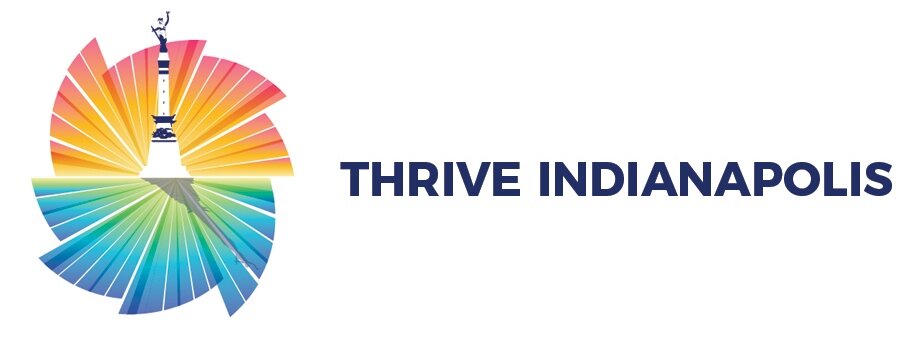Public HEALTH & SAFETY
The health and safety of the public is a priority and is addressed through community programs that promote overall well-being and physical activity, as well as work to ensure that all residents are safe, have access to affordable healthcare and are prepared for climate- and human-related hazards.
Public Health and Safety: (PH:1) Upward trend in the percentage of the population that reports being active, healthy and happy
| Action | Status | |
|---|---|---|
| PH:1A | Collaboratively engage the Marion County Public Health Department and relevant local government departments or agencies to integrate health considerations (typically referred to as “Health in All Policies”) into local plans and policies related to the built environment, physical activity and access to fresh food with equitable benefits for everyone in the community before 2024. | Action Needed |
| PH:1B | Develop a Community Health Improvement Plan to strengthen equity in the delivery of health services and improve community health before 2020. This will include addressing issues around the social determinants of health, mental health and obesity/diabetes. | Action Needed |
| PH:1C | Increase reach of information and education to the public regarding health issues, including climate-related illnesses related to more anticipated heat, ozone and mosquitoes. | In Progress |
Knozone is an initiative of the Office of Sustainability to make Central Indiana one of the Midwest’s most sustainable, livable regions. Through education, resources, and guidance for taking action, Knozone works with residents, schools, and businesses to improve our region’s air quality, making Central Indiana a great place to live, work, and visit.
Air pollution is a problem that affects everyone, but even small individual changes can have big impacts on Indy's air quality. To discover current conditions for air quality index (AQI) and learn more about habits you can adopt into your own routine, visit Knozone.
Knozone Action Days
While Knozone is a 365-day-a-year effort, on days ground-level ozone and/or fine particulate matter (PM2.5) are at unhealthy levels, our air quality experts call a "Knozone Action Day." On these days, sensitive individuals like active children, the elderly, and anyone suffering from asthma, lung disease, or other pulmonary problems and serious health conditions should avoid spending time outdoors as much as possible.
Public Health and Safety: (PH:2) Increase community resilience through public health and safety measures that are equitably deployed.
| Action | Status | |
|---|---|---|
| PH:2A | Increase the number of residents with emergency preparedness resources and training in our most vulnerable neighborhoods based on the 2018 Vulnerability Assessment before 2022. | Action Needed |
| PH:2B | Launch a coordinated preparedness campaign by 2022 - with City departments, emergency management agencies and preparedness organizations - that encourages residents to take actions that improve their ability to protect themselves and our community in advance of a crisis based on 2018 Multi-Hazard Mitigation Plan recommendations. | Action Needed |
| PH:2C | Pilot the city’s first energy resource center with physical, web and mobile resources, acting as a resilience hub for the neighborhood before 2021. Residents will have access to information that better prepares them for natural disasters and other hazards | In Progress |
| PH:2D | Expand workforce preparedness training opportunities and programs including climate change information for physicians and other public health providers, to quickly restore essential city services after a crisis before 2022. | Action Needed |
Emergency preparedness
Being prepared for emergencies is crucial at home, school, work and in your community. Disasters can strike quickly and without warning. They can force you to evacuate your neighborhood, workplace or school or can confine you to your home. What would you do if basic services – water, gas, electricity or telephones – were cut off?
Local officials and relief workers will be on the scene after a disaster, but they cannot reach everyone right away. The best way to make you and your family safer is to be prepared before a disaster strikes. For more information, please visit American Red Cross.
Multi-Hazard Mitigation Plan
This plan guides and supports local agencies to respond to hazards and threats to the region, including flooding, high winds, and tornadoes. The actions highlighted in this plan have also been carried forward into Thrive Indianapolis, the first sustainability and resiliency action plan in our city's history.
View the 2018 Marion County Multi-Hazard Mitigation Plan here.
PH:2C - Resilience Hub
Through Thrive, and the Bloomberg Philanthropies American Cities Climate Challenge, the City of Indianapolis has set forth on the endeavor of creating the city’s first sustainability, resilience, mobility, and energy hub. A resilience hub is a community-serving facility augmented to support residents and coordinate resource distribution and services before, during, or after a natural disaster. These facilities utilize already existing infrastructure to turn community staples into community savers. The Indianapolis hub model serves as a one-stop-shop for preparedness, mobility and energy resources, providing our most vulnerable communities with invaluable resources and personnel.





